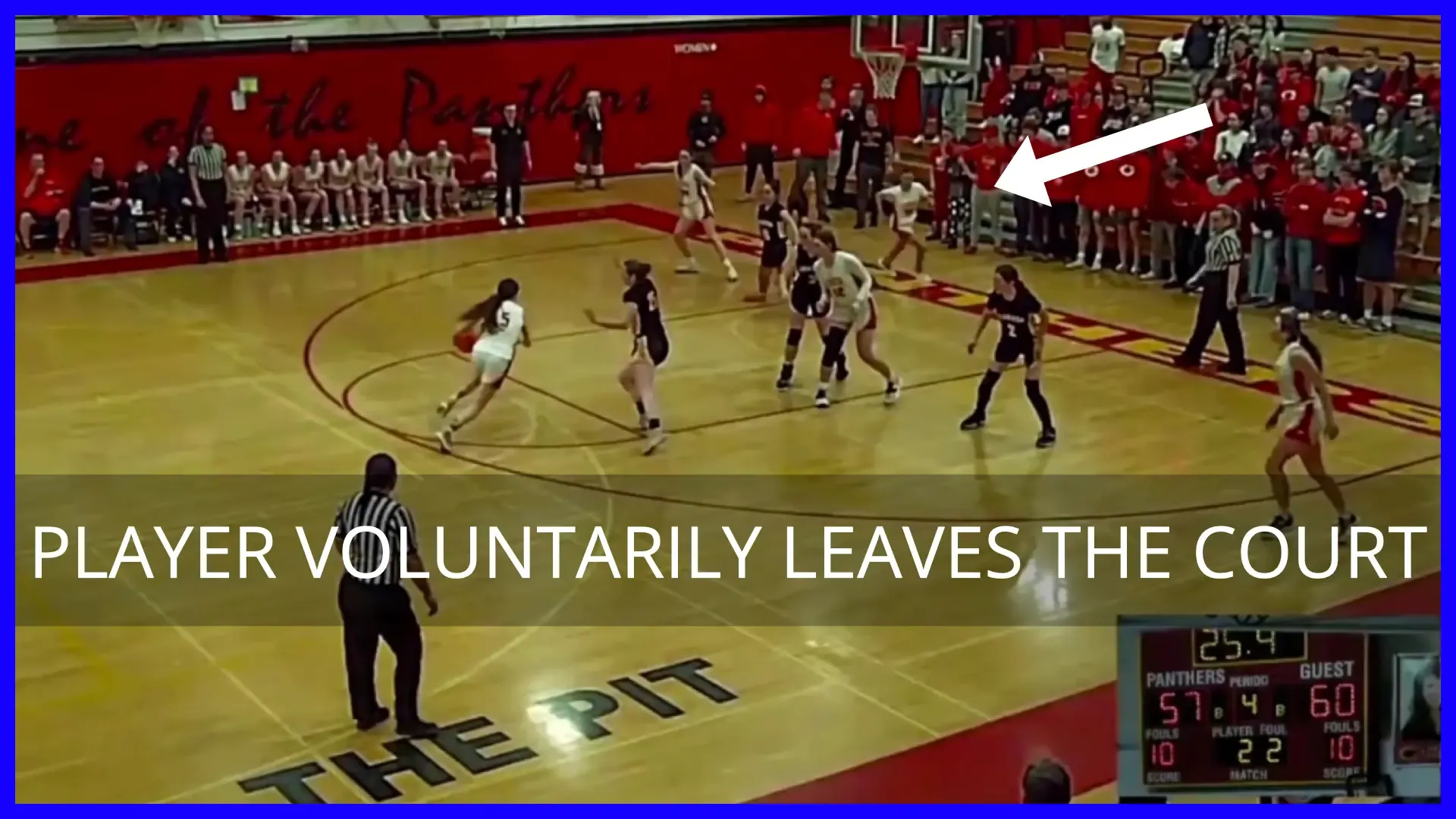Player Voluntarily Leaving the Court (Rule Change)

In this playoff game, an official correctly ruled a violation when a player voluntarily left the court during live play. Under the rules last season, this action was illegal. However, for the 2023-2024 season, the rule has changed. Players can now voluntarily leave the court as long as they are not the first to touch the ball upon returning. This change makes it critical for officials to distinguish between voluntary and involuntary actions, such as momentum carrying a player off the court.
In this situation, the player used the out-of-bounds area to reposition, which previously would have resulted in a violation. This rule update emphasizes the importance of officials staying up-to-date on rule changes to make the correct calls. Moving forward, officials must ensure that players aren’t gaining an unfair advantage by being the first to touch the ball after stepping off the court.
Actionable Tips for Basketball Officials:
- Memorize the New Rule: Know when a player can legally leave the court.
- Focus on Player Advantage: Ensure no unfair advantage is gained.
- Keep It Simple: Don’t confuse this rule with momentum or throw-in situations.
TRANSCRIPT:
Last year, in a playoff game, we had this out-of-bounds violation ruled: a player voluntarily leaving the court during live play. If we look, the player made a choice: "I'm going to run to the other side of the court," and in doing so, they ran off the court. The official, in this instance, ruled this to be a violation, which was correct by rule.
Of course, the fact that this happened under 30 seconds in a three-point playoff game, with the loser going home, added an interesting twist. But this was the correct ruling by rule in high school. In previous seasons, this rule has now changed.
When we discuss a player voluntarily leaving the court, this is the play we’re talking about. We're not discussing situations where a player saves the ball, returns to the court, and touches it because their momentum carried them off. That's not the case here. This is a situation where a player voluntarily runs from one side of the court to the other, using the out-of-bounds area.
This is now legal in high school for the coming season, so it’s great to review this play to help us with that understanding. In the past, this was illegal. In the future, this will be legal, as long as the player is not the first to touch the ball upon returning to the court.
We see in this play that the action was designed to go in the other direction. Play drives the lane, a light pass goes to the wing. In this instance, in the 2023-2024 season, this would be a legal play. However, the confusion results because nobody knows what’s happened here. It had to be explained to the coach, etc. So, while this was illegal by rule, it’s now legal for the 2023-2024 season.
The key takeaway here is that we are looking at a player voluntarily running off the court. That’s what the new rule refers to — this being legal. This action is legal this year, as long as the player is not the first to contact the ball upon returning to the court. But, I have a feeling that we’re going to get into situations where officials overthink this new rule and try to apply it to momentum situations or throw-in situations, etc. During live play, if a player runs off the court from one point to another and they are not the first to touch the ball, this is now legal by rule in high school basketball.
Stay connected with news and updates!
Join our mailing list to receive the latest news and updates from our team.
Don't worry, your information will not be shared.
We hate SPAM. We will never sell your information, for any reason.



